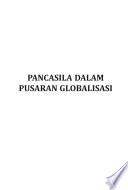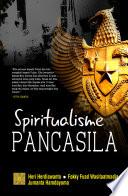“Tidak ada agama yang namanya menunjukkan visinya, kecuai Islam. Dan tidak ada nama Allah yang paling banyak disebut, kecuali al-Rahman dan al-Rahim, yang berarti kasih sayang. Buku cendekiawan muda Islam ini mengurai kedua makna tersebut dengan cara yang bersahaja, tetapi substansial.” K.H. Husein Muhammad “Dan Aku tidak mengutusmu (Wahai, Muhammad) selain sebagai rahmat bagi alam semesta.” (QS. Al-Anbiya’, 107). Buku ini secara khusus saya susun dengan tuturan sederhana untuk memperlihatkan bahwa Islam kita adalah sebenar-benarnya agama yang rahmatan lil ‘alamin. Musykil betul buat siapa pun untuk menciptakan dunia ini, semua umat Islam, berada di bawah satu panji paham, aliran, dan mazhab. Hasrat begitu bukan hanya menentang sunnatullah yang telah menggariskan dunia ini majemuk, tapi sekaligus rawan menjungkalkan kita pada kepongahan hawa nafsu merasa diri paling benar, paling suci, dan paling sesuai tuntunan Allah dan Rasulullah Saw, hingga terjerembab mengesahkan sikap-sikap negatif kepada orang lain, melukai teladan akhlak karimah Sang Nabi Saw. Sungguh tiada sikap terbaik buat semua kita di tengah khittah kemajemukan Islam ini selain semata mengedepankan akhlak karimah, seperti hormat-menghormati atas pilihan paham dan mazhab setiap kita dan welas-asih sebagai sesama manusia yang sejatinya sedang sama-sama berjuang dan mengharap ridha Allah Swt dan syafaat Rasululah Saw. Ihwal paham dan mazhab siapa yang mutlak benar, biarkanlah ia selalu menjadi Hak Prerogatif Allah Swt. Mari gempalkan Islam yang telah dikaruniakanNya dengan hati cemerlang dan wajah bercahaya: bahwa Islamku dan Islammu, dalam keragaman perbedaannya, adalah Islam kita –Islamnya Allah, Islamnya Rasulullah Saw.
Mari gempalkan Islam yang telah dikaruniakanNya dengan hati cemerlang dan wajah bercahaya: bahwa Islamku dan Islammu, dalam keragaman perbedaannya, adalah Islam kita –Islamnya Allah, Islamnya Rasulullah Saw.










